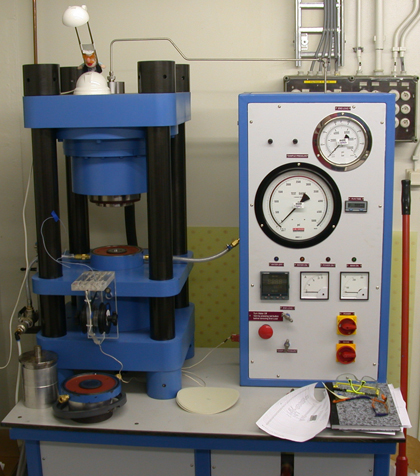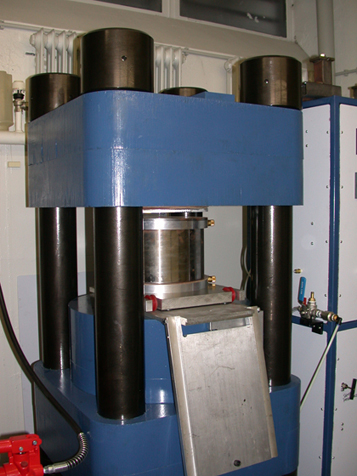The VU University Amsterdam planetary evolution research group uses high-pressure, high-temperature devices to solve mineralogical and petrological problems in Earth and Planetary Science.
The high-pressure lab was established in 2006 and contains a University of Bristol end-loaded piston cylinder press (for experiments between 1 and 3 GPa), a QuickPress (for experiments between 0.5 and 4 GPa), a 800 ton multi-anvil press (for experiments up to 25 GPa), and a 1 atm gas mixing furnace (for experiments at controlled oxygen fugacity conditions).
With the help of these, my group studies phase petrology and the systematics of trace element partitioning between silicate minerals, silicate or iron alloy melts, and water-rich fluids.
We are also using synchrotron X-ray diffraction and absorption techniques at the European Synchrotron Radiation Facility (ESRF) and the Deutsches Elektronen-Synchrotron (DESY, Hamburg) for in situ measurements of physical and chemical properties of minerals and melts
at high pressure and temperature.


Current main research interests of the group include
Experimental studies of the evolution of the interior of the Moon
Combined experimental and numerical studies of the interior evolution of Mercury
Experiments and computer simulations to constrain mineral-water partitioning of trace elements in subduction zone settings
Element and stable isotope partitioning between metal and silicate to constrain core formation in the Earth, Moon and Mars
Optimisation of combined Raman/LIBS instrumentation to analyse the composition of the lunar surface
Remote sensing studies of the surfaces of the Moon, Mercury and Mars
This research is funded by grants from the Netherlands Organisation for Scientific Research (NWO) and the Netherlands Space Office (NSO).
More information about these projects and the people that are doing the actual hard work can be found on the team member pages
This 2011 video (in Dutch) introduces my research field:
Back to the index

